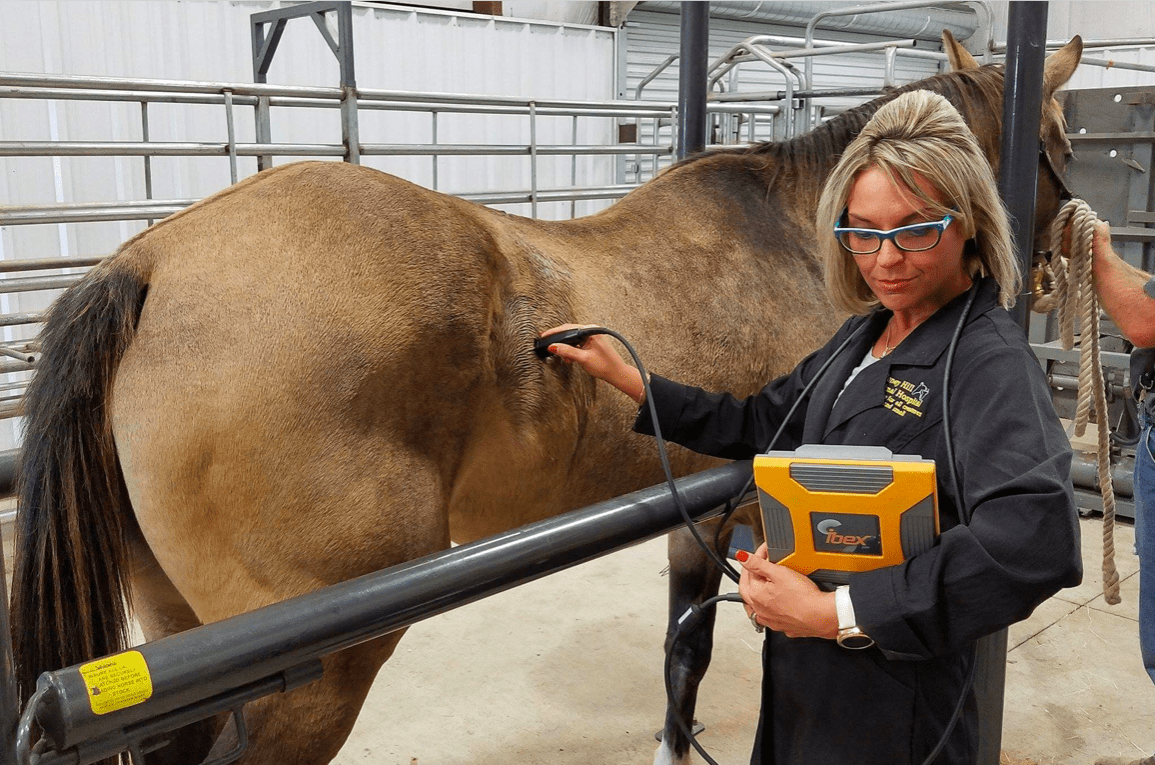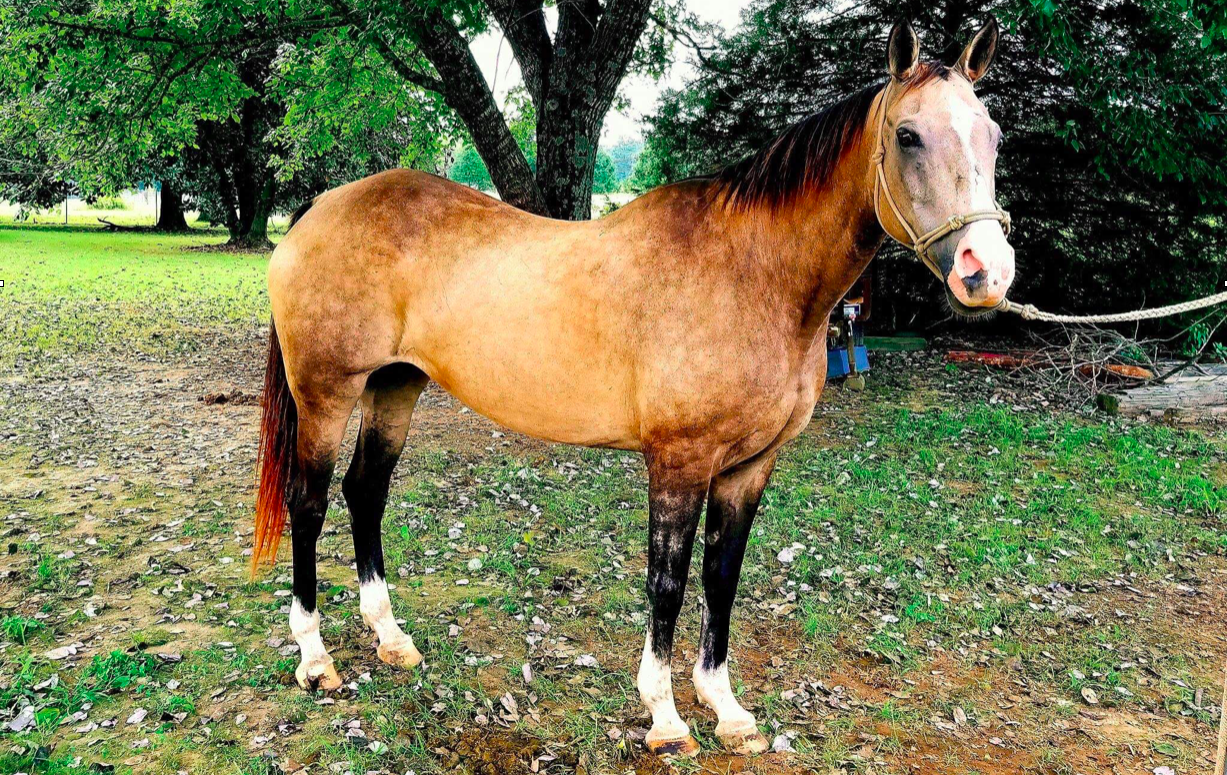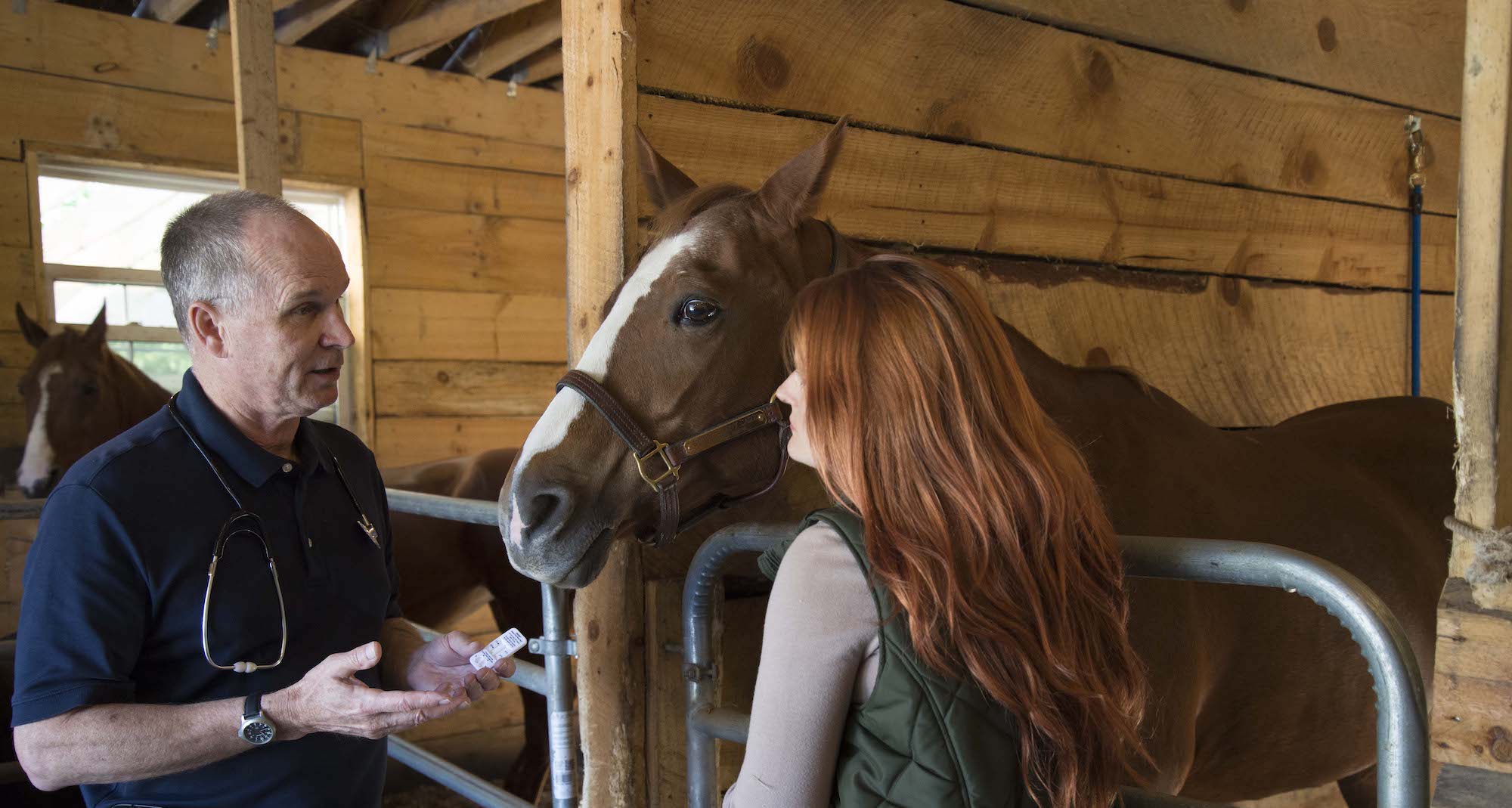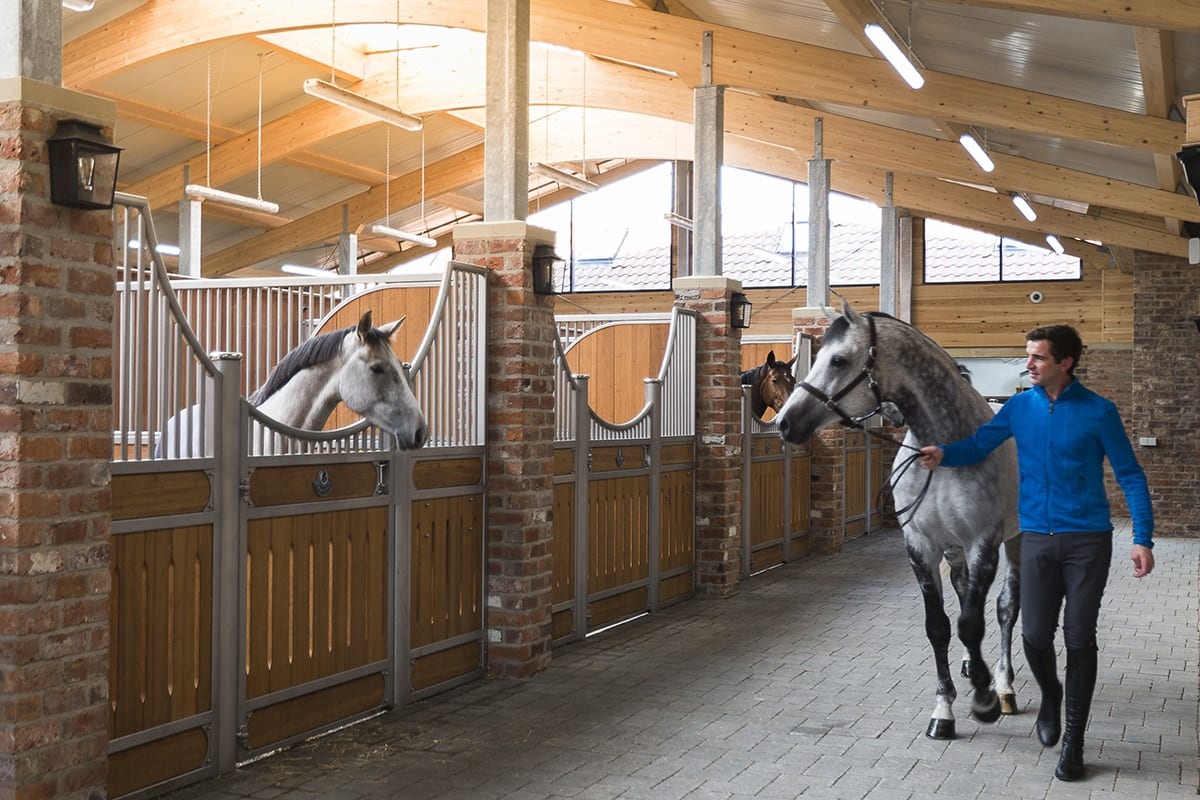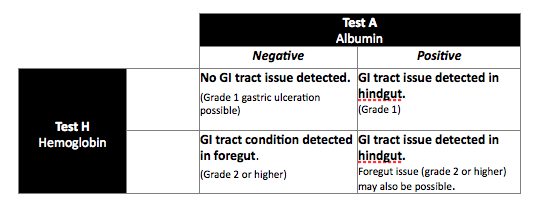Summary
The patient in this case presented initially for evaluation of a lameness, and in turn was tentatively diagnosed with a hindgut ulcerative condition. The owners were unaware of the patient’s concurrent condition, but when questioned regarding clinical signs commonly associated with hindgut disorders, they indicated that the patient had flank sensitivity, intermittent diarrhea, and rough hair coat. SUCCEED Veterinary Formula was added to the patient’s diet, and the patient responded favorably.
Case Report for 18yo QH Mare
Horse
Patient Name: Sassy
Age: 18
Sex: Mare
Breed: Quarter Horse
History
Sassy presented to the practice for evaluation of bilateral front limb lameness and rotation of the third phalanx, as well as loss of condition. Owner reports that due to recent lameness, the patient had been stabled exclusively for the last week without turnout and was being fed grass hay and Strategy pellets twice daily.
Physical Exam
Patient presented with Grade III/IV bilateral forelimb lameness, and exhibited the traditional forefoot forward stance of a laminitic patient. Patient had a noticeable unthriftiness to the hair coat, as well as a thin body condition score (BCS=4/9). Normal temperature, respirations, and mildly increased heart rate noted, as well as normal auscultation of lungs and heart. Normal gut sounds present in all four quadrants, but patient resisted palpating of right dorsal colon area during auscultation. Digital pulses present in both front hooves.
Diagnostic Test
- Radiographs revealed moderate rotation of the third phalanx on both front limbs.
- SUCCEED Fecal Blood Test revealed positive albumin, negative hemoglobin.
- Fecal Egg Count revealed no EPG.
- Fecal pH of 6.4
- Trans-abdominal ultrasound of the right dorsal colon revealed thickened walls (6mm average).
Differential Diagnosis
- Bilateral laminitis with rotation
- Hindgut acidosis
- Hindgut bleeding (albumin loss)
- Right dorsal colitis
Treatment
Appointment with corrective farrier for corrective shoeing. Firocoxib and Gabapentin prescribed to control pain and inflammation during treatment period.
SUCCEED VF fed according to label instructions (twice daily for the first seven days, and then once daily thereafter).
Outcome (30 day recheck)
Patient continues to undergo corrective shoeing for rotation along with continued radiographic monitoring. Rotation is slowly improving, and patient is now comfortable without use of medications. Patient has a noticeably brighter hair coat, her body condition score has improved (BCS=5/9). The owner reports that the patient is less sensitive to being brushed on the flanks and seems to be more comfortable and happier overall. The patient continues to be given SUCCEED daily, and the owner reports she takes it readily. Fecal Blood Test was repeated and is now negative for both hemoglobin and albumin.
Discussion
Ulcerative conditions of the hindgut are uniquely difficult to definitively diagnose due to the inability to visually examine the colon. The use of the SUCCEED FBT kit in this case proved to be an invaluable diagnostic aid and assisted the clinician in not only diagnosis but also in monitoring of the treatment plan’s overall success. Cases such as this one also serve to reiterate that although a patient presents clinically for one condition, a thorough physical exam and history are essential components of every appointment in order to assure that disease processes are not overlooked.

